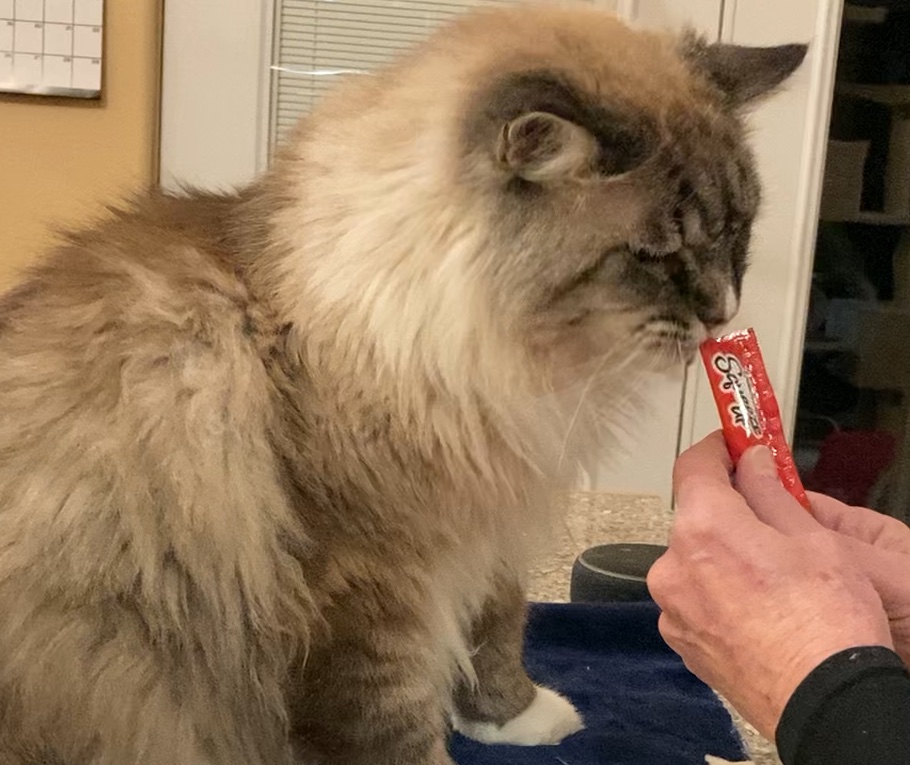 Eating is a positive experience for healthy animals. Two neurotransmitters released while eating are dopamine and serotonin. Dopamine is associated with feelings of reward and motivation; serotonin with feelings of happiness and calmness. Thus, food is one of the ways we can induce a positive emotional state in a healthy cat.
Eating is a positive experience for healthy animals. Two neurotransmitters released while eating are dopamine and serotonin. Dopamine is associated with feelings of reward and motivation; serotonin with feelings of happiness and calmness. Thus, food is one of the ways we can induce a positive emotional state in a healthy cat.
Food and your cat’s mental health
Recent research points to two dopamine events when eating: the first when you actually eat the food and the second, when the food reaches your stomach. (Reference 1). On the other hand, rising serotonin levels act as an appetite suppressant, giving a feeling of satiety. (Reference 2)
The connection between food and your cat’s mental health provides us an opportunity to take advantage of the emotions triggered by dopamine and serotonin when eating.
Foods that calm
There are foods that incorporate tryptophan, a precursor to serotonin. Royal Canin’s Calm diet and Hill’s c/d Multicare Stress for cats contain hydrolyzed milk protein and L-tryptophan to reduce your cat’s fearful behaviors in stressful situations or environments. The caveat with these foods is that the cat must eat enough of the food to get the appropriate dose of tryptophan.
 food and environmental enrichment
food and environmental enrichment
Engaging in foraging behavior can benefit cats with generalized or separation anxiety. (Reference 3)
- Foraging can provide a cat that is vigilant, tense and easily aroused with an alternative outlet for her energy
- Cats with separation anxiety will find foraging a rewarding activity that is not related to interacting with the owner.
- Serotonin release during the foraging cycle promotes calm behavior.
Foraging Method 1 – Multiple Separate Feeding Stations
- Divide your cat’s daily food ration into portions.
- Place these in different places around the house.
- Put some dishes up high or in boxes and closets for variety
Foraging Method 2 – Use of Food Puzzles
- Cats have to use their paws to get the food
- Vary in complexity and style
 Food and your cat’s mental health: behavior modification
Food and your cat’s mental health: behavior modification
We can use the positive emotions triggered by eating to guide our cats’ behaviors. The use of a stream of small food rewards will trigger dopamine release, which in turn gives the cat feelings of reward and motivation. Food can be a powerful adjunct to some of the interventions used in veterinary behavioral care: (Reference 3)
- counter conditioning
- operant conditioning
- differential reinforcement of alternate behaviors
These methods work best with foods that the individual cat finds particularly palatable and desirable.
counter conditioning and food
Counter conditioning refers to training a different response to a situation. Consider the cat carrier that takes your cat to the vet. Many cats have a fearful association with the carrier and the process of going into it. The goal of counter conditioning here is to teach the cat that good things happen when he’s near the carrier.
We start with getting the cat accustomed to the carrier by just leaving it out in the room. Once he is comfortable with the carrier left out, we can offer some treats close by the carrier and gradually work up to treats in the carrier. Over time, the cat will associate good things with the carrier – we have used food (treats) to change the cat’s emotional state when near the carrier.
operant conditioning and food
With operant conditioning, an animal repeats behaviors that have good consequences and avoids ones that are not rewarding. Say you ask your cat to “sit”. When he sits, you reward him with a treat (food) he likes. He will be more likely to sit next time in anticipation of getting his reward.
differential reinforcement of alternate behaviorS
Here you will be replacing an undesired behavior with one that is more appropriate to the situation. Say your new kitten attacks and hangs on to your legs as you as come in the door or you have a “door-dashing” cat. You could train (operant conditioning) your kitten/cat to jump up on a nearby shelf or table on cue for a food reward when the door is opened. (The cue can be spoken or you could jingle your keys.) The goal is to replace the attacking/door dashing behavior with sitting on the nearby piece of furniture.
Food makes our cats feel good. Neurotransmitters such as dopamine and serotonin promote positive emotions when eating. This connection between food and your cat’s mental health provides you with opportunities to influence your cat’s behavior through diet, environment and training.
references
1. Cell Press. “Your brain rewards you twice per meal: When you eat and when food reaches your stomach.” ScienceDaily. ScienceDaily, 27 December 2018. <www.sciencedaily.com/releases/2018/12/181227111420.htm>.
2. Voigt JP, Fink H. Serotonin controlling feeding and satiety. Behav Brain Res. 2015 Jan 15;277:14-31. doi: 10.1016/j.bbr.2014.08.065. Epub 2014 Sep 16. PMID: 25217810.
3. Delgado M, Dantas LMS. Feeding Cats for Optimal Mental and Behavioral Well-Being. Vet Clin North Am Small Anim Pract. 2020 Sep;50(5):939-953. doi: 10.1016/j.cvsm.2020.05.003. Epub 2020 Jul 8. PMID: 32653265; PMCID: PMC7415653.

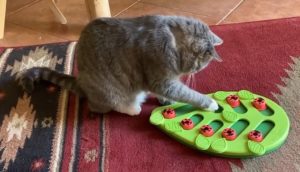 food and environmental enrichment
food and environmental enrichment Food and your cat’s mental health: behavior modification
Food and your cat’s mental health: behavior modification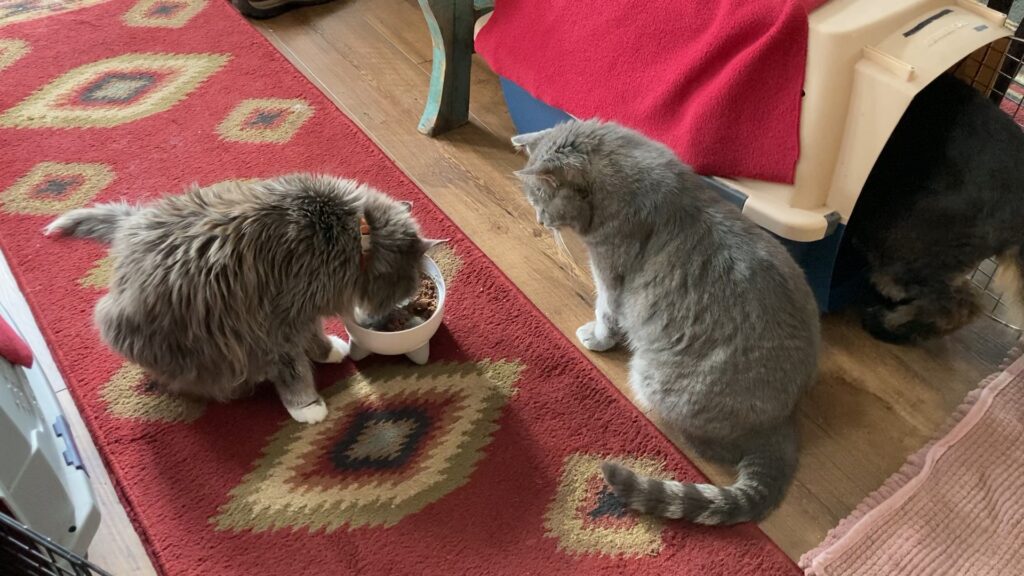
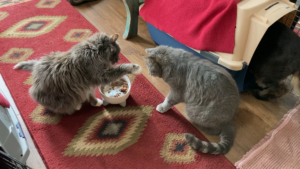
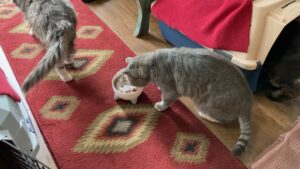

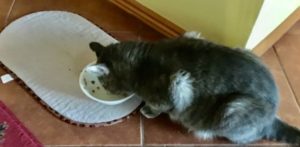

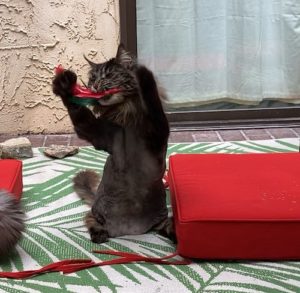


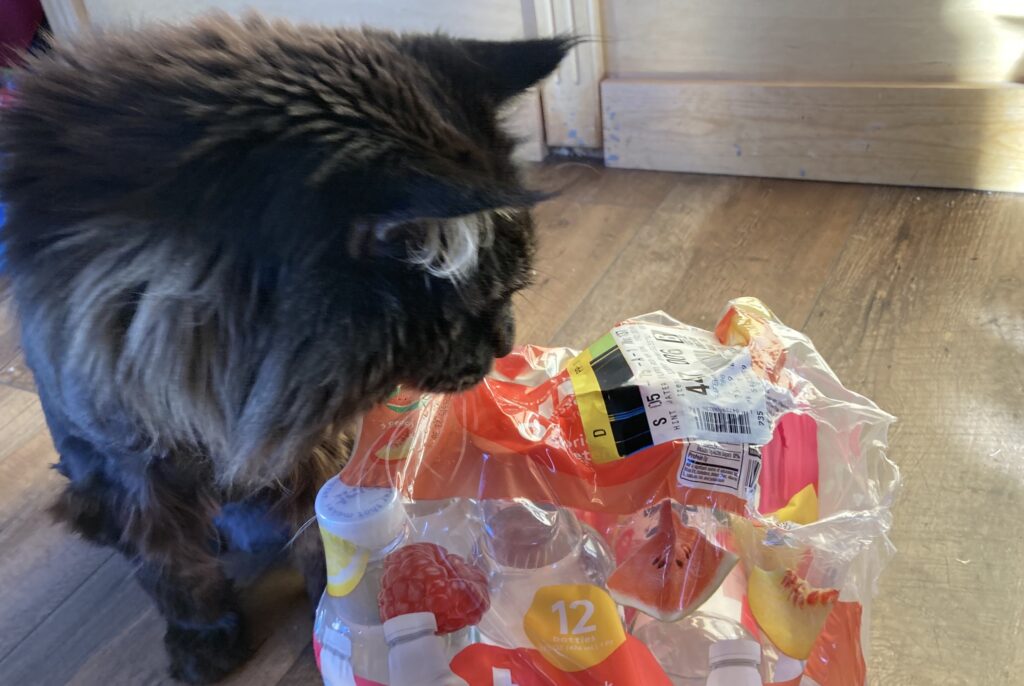 Have you had or do you have a cat who would eat anything – hair ties, ribbons, plastic – in addition to food? Have you experienced the anxiety waiting for your cat to pass whatever object you think he ate? It is not unheard of for cats to eat, chew or suck on non-food items. This behavior is called pica. How do you manage the cat with pica?
Have you had or do you have a cat who would eat anything – hair ties, ribbons, plastic – in addition to food? Have you experienced the anxiety waiting for your cat to pass whatever object you think he ate? It is not unheard of for cats to eat, chew or suck on non-food items. This behavior is called pica. How do you manage the cat with pica? In this post, we look at how cats get along with other species – are their behaviors affiliative or is there conflict?
In this post, we look at how cats get along with other species – are their behaviors affiliative or is there conflict?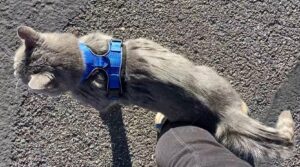 Cats use the same friendly behaviors when interacting with people as they do with other cats.
Cats use the same friendly behaviors when interacting with people as they do with other cats. A Tale of Tails
A Tale of Tails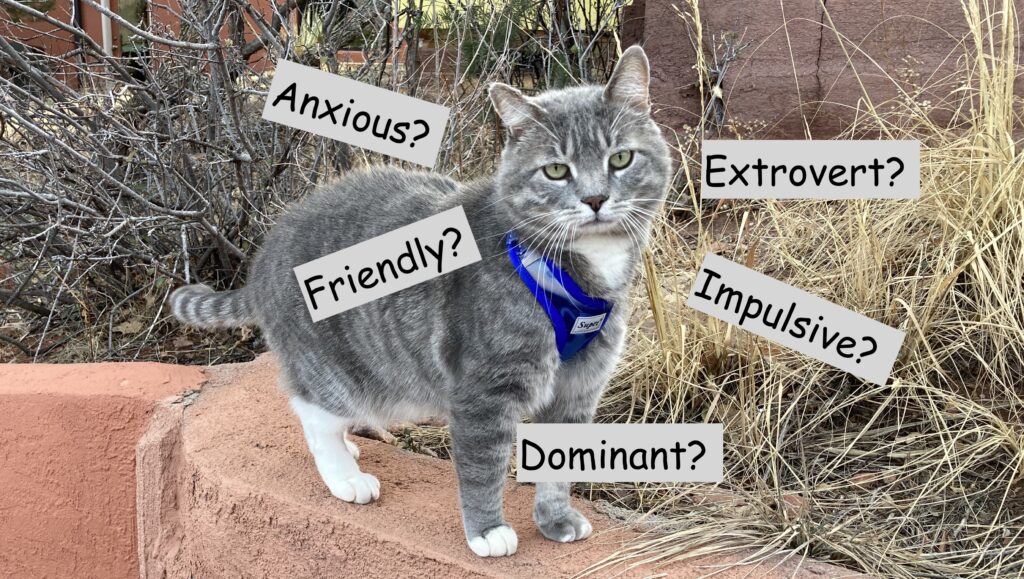 Do cats have personalities? If you
Do cats have personalities? If you 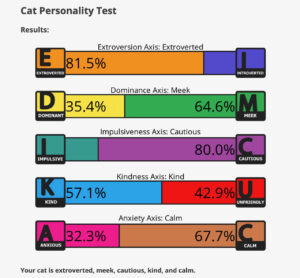
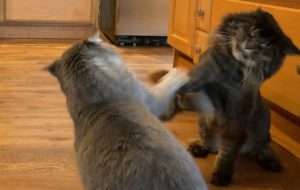

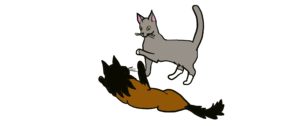
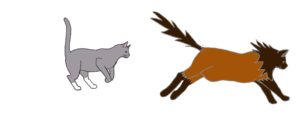

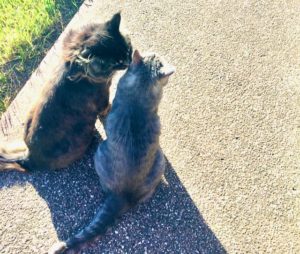
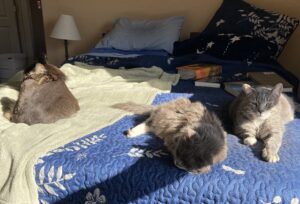 Cats don’t have to be “preferred associates” to choose a spot in the sun in the same room as a housemate cat. As long as there is plenty of space, peaceful coexistence should be possible.
Cats don’t have to be “preferred associates” to choose a spot in the sun in the same room as a housemate cat. As long as there is plenty of space, peaceful coexistence should be possible.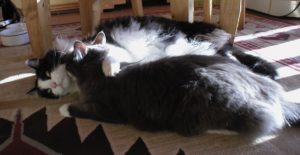
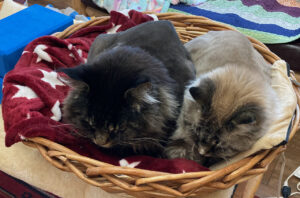
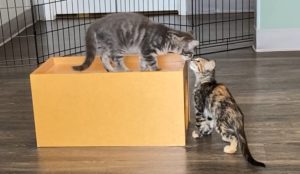
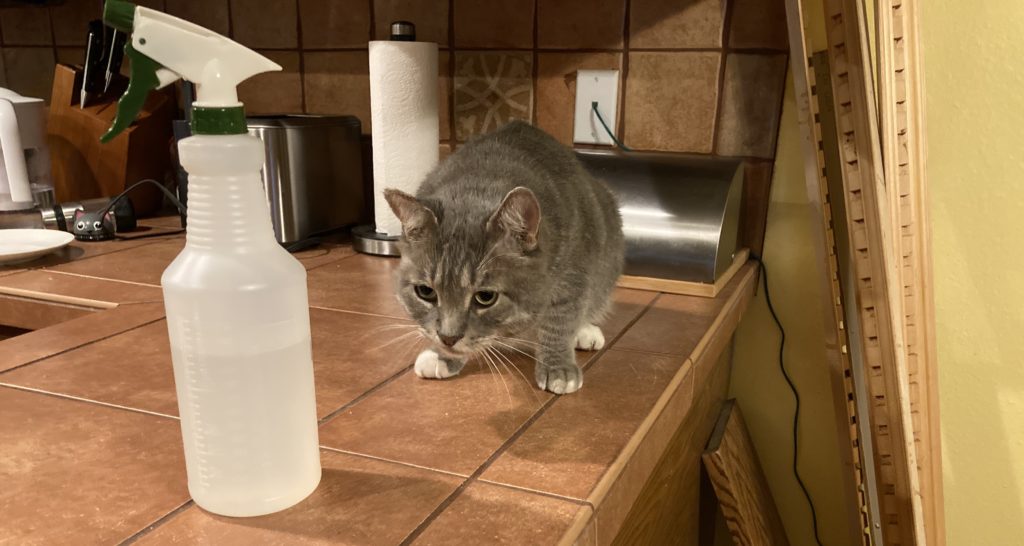 After adopting a feral cat 3 years ago, I am still struggling with cats on the counter. Gus spent most of his wild life dumpster diving, and hunting mice and bugs for food. He certainly would have availed himself of any food a good samaritan left out for the community cats. Understandably, the kitchen counter is a cornucopia of food as far as he is concerned.
After adopting a feral cat 3 years ago, I am still struggling with cats on the counter. Gus spent most of his wild life dumpster diving, and hunting mice and bugs for food. He certainly would have availed himself of any food a good samaritan left out for the community cats. Understandably, the kitchen counter is a cornucopia of food as far as he is concerned. Choose a mat for your cat to sit on.
Choose a mat for your cat to sit on.

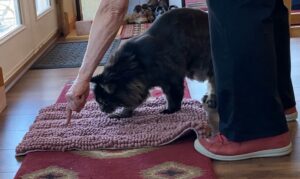
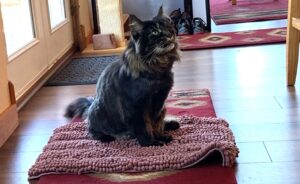 “Shape” the behavior by having her stay on the mat for increasingly longer periods of time.
“Shape” the behavior by having her stay on the mat for increasingly longer periods of time. Establish a cue to let her know she can leave the mat.
Establish a cue to let her know she can leave the mat.

